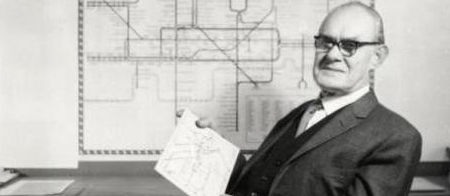Going underground
Can churches take inspiration from the brilliant simplicity of the London Underground map? By Martin Sweet
 Anyone travelling around London on the tube, especially during the summer tourist season, will see scores of would-be passengers finger poking a large London Underground map on the wall of a station, seeking inspiration for a suitable route for their journey.
Anyone travelling around London on the tube, especially during the summer tourist season, will see scores of would-be passengers finger poking a large London Underground map on the wall of a station, seeking inspiration for a suitable route for their journey.
Amazingly, it is, apart from the place and tube-line names, truly international. Anyone, after a couple of minutes, will ‘get it’.
While Harry Beck is not a household name, his significant contribution to British culture was to design this iconic map. Harry was a technical draughtsman and his usual graphics were electronic circuit boards, not maps.
Not being a geographer, he was not limited to mapping techniques. When he presented his original draft in 1931 he had expanded the central area of London, distorting geography, and simplified the map so that the railways appeared as straight lines with more-or-less equally spaced stations.
Harry believed that passengers travelling on the Underground were not concerned with geographical accuracy, but in how to get from one station to another and where to change trains.
London Underground was initially sceptical, and somewhat negative, of Beck's radical proposal. But that position didn't last. More than half a billion copies later, the current map states that 'this diagram is an evolution of the original design conceived in 1931 by Harry Beck’. It was, as Simon Garfield states, a ‘prime example of how a designer can take problem and simplify it – and inspire its users’.
I'm wondering if it's time for some prophetic Harrys to stand up and complain that the church needs to get simpler? You see, apart from the River Thames, because Beck’s map ignored geographical details and accuracy. For example, the central area is a different scale from the outlying parts.
The Underground map does what we, at times, seem unable to do. For example, in reality all the stations are not equal distances apart, but on the map they are and they are presented in a way that suggests equal size and importance. On his schematic map, Oxford Circus is as important as Colliers Wood! There is no deference shown to special places. There is no implied status in the typeface. Westminster is not a couple of points bolder.
And with us, it is not how successful we see any one particular church or group, but does it benefit the ‘travellers’. Are people actually finding us? In our modern church and organisational networking, are we in danger of becoming over-complicated and over-detailed?
What has this got to do with reaching children in schools? Basically everything! Because to the generation of children and parents we have around us, the relative status of a church is irrelevant. The ‘topographical’ details of our various churches are of no importance to a generation who only need to know, spiritually, in which direction they need to travel.
There is every opportunity for the Christian community to ‘get underneath’ the school. By ‘underneath’ I mean educationally, pastorally and by offering resources both practical and financial. Where churches and organisations work together to create a network that gets underneath our communities, children and families may have the opportunity to find their Way .. and the Truth and the Life.
The fact that every year the Underground carries over a billion passengers ought to be vision enough for all of us! Or to put it more simply, as Harry Beck might, will this generation ‘get it’?
Martin Sweet writes on behalf of the Baptist Education Group (BEG). The vision of the Baptist Education Group is to encourage every Baptist church to strategically engage in supporting its local school.
Martin is director of Spinnaker Trust, an organisation with over 25 years’ experience, based in SE London, regularly supporting over 100 primary schools in London and the Southeast with RE, assemblies and much more.
Picture: Wikimedia Commons
Related:
Collective responsibility for school assemblies
Time for a coffee with a head teacher
It's not the proposal to abolish collective worship in schools that's more dangerous, but our reaction to it
Baptist Times, 26/12/2015